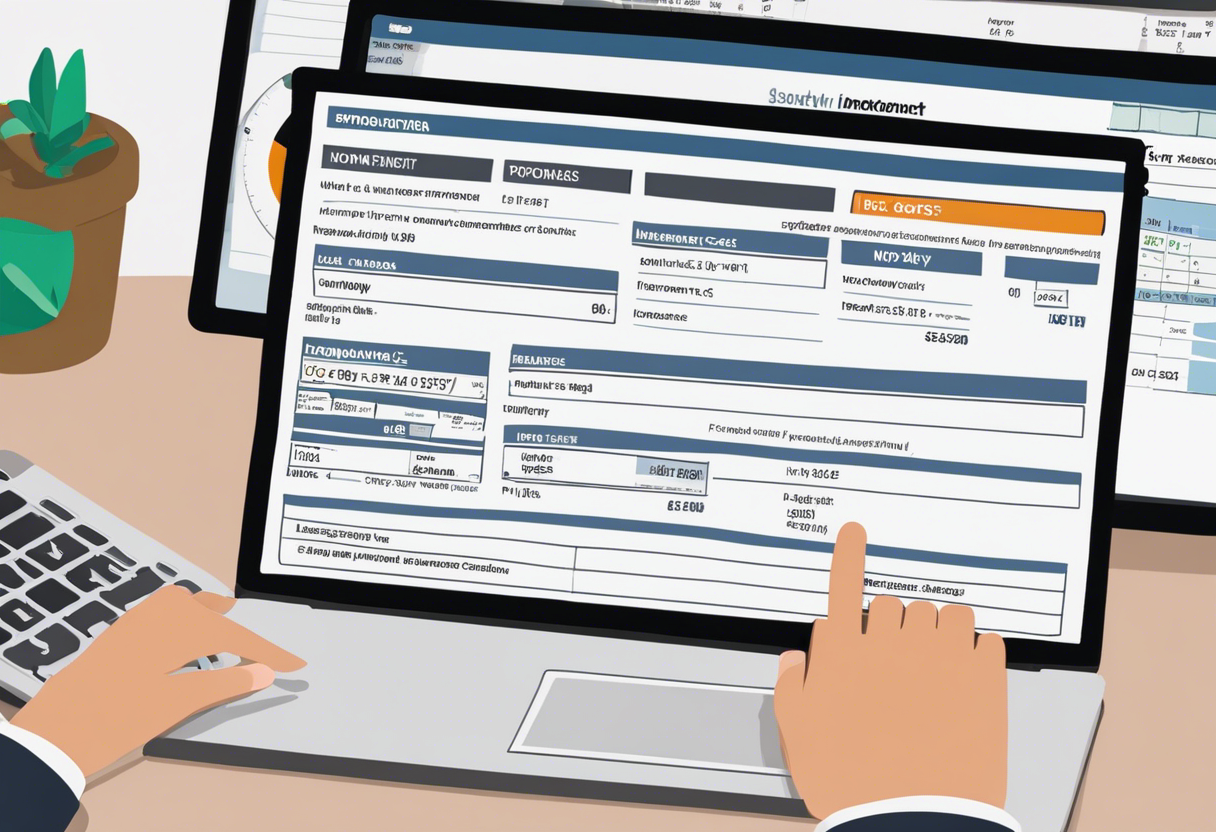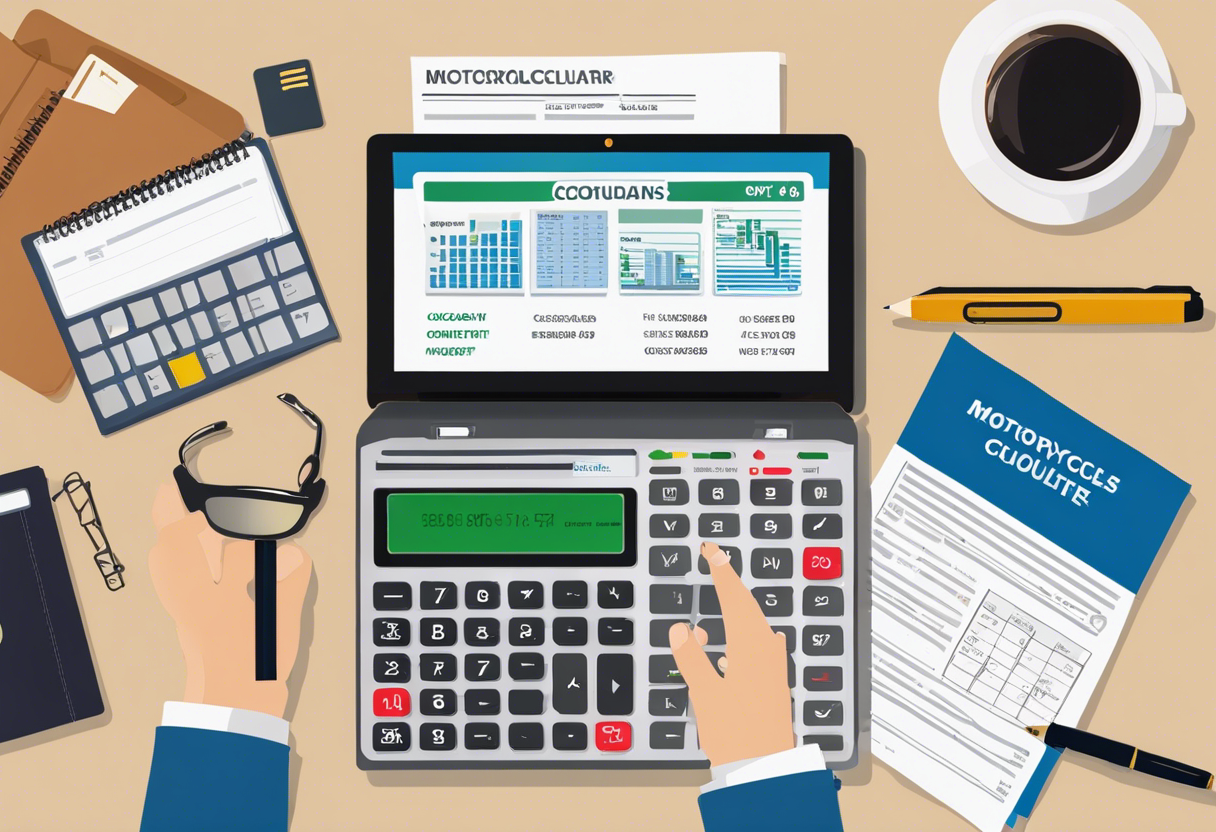When contemplating motorbike financing, it’s essential to grasp the key components involved in the process. Understanding these elements allows riders to navigate the finance motorcycle process with confidence.
- Loan Amount: This is the total sum of money borrowed to purchase the motorcycle.
- Interest Rate: Lenders charge this as a percentage of the loan, influencing the total cost of borrowing.
- Loan Term: The duration over which the loan will be repaid, typically in monthly installments.
- Down Payment: An upfront payment which reduces the loan amount and potentially the interest.
- Credit Score: A critical factor affecting the interest rate offered by lenders.
Understanding these elements allows riders to navigate the finance motorcycle process with confidence.
Assessing Your Financial Health Before Committing to a Loan
Before embarking on a motorcycle loan, individuals should meticulously scrutinize their financial situation. This evaluation ensures affordability and prevents financial strain. Key steps in assessing financial health include:
- Reviewing Credit Reports: Evaluate credit history for accuracy and determine creditworthiness, as this affects loan terms.
- Calculating Debt-to-Income Ratio: Gauge capacity to manage additional debt by comparing monthly debt obligations to income.
- Establishing an Emergency Fund: Ensure there’s a financial cushion to cover unexpected expenses without jeopardizing loan payments.
- Analyzing Monthly Budget: Identify current expenditures to ascertain if a motorcycle loan is a feasible commitment.
- Forecasting Future Expenses: Consider potential future costs, not just present expenses, to ensure long-term loan affordability.
Taking these measures can safeguard against financial distress while enjoying the new purchase.
Choosing the Right Type of Loan for Your Motorbike Purchase
When selecting a loan for your motorbike purchase, consider several factors to ensure it aligns with your financial situation and goals. Different types of loans include:
- Personal Loans: Offered by banks and credit unions, they have fixed terms and could be secured or unsecured.
- Dealer Financing: Specific to motorcycles, often with promotional rates but may include hidden fees.
- Credit Card Financing: Suitable for lower-cost bikes, but be aware of high-interest rates.
- Peer-to-Peer Lending: An alternative option that might provide flexible terms.
Weigh interest rates, repayment periods, and any additional costs. Utilizing a motorcycle finance calculator helps to understand the monthly payments and total cost of the loan.
Analyzing Interest Rates and How They Affect Your Payments
Understanding interest rates is crucial when using a finance motorcycle calculator. They can significantly impact your monthly payments:
- Higher Rates Mean Higher Payments: Interest is the cost of borrowing money. A higher interest rate increases the overall amount you’ll pay back.
- Variable vs. Fixed Rates: Fixed rates stay the same throughout the loan term, ensuring consistent payments. Variable rates can fluctuate, affecting payment amounts.
- Term Length Matters: Longer loan terms may have lower monthly payments but result in more interest over time.
By inputting different rates into a motorcycle finance calculator, one can see how the cost of financing changes with interest fluctuations, aiding in finding a manageable payment plan.
The Importance of Down Payment and How It Impacts Financing
A down payment in the context of financing a motorcycle is a crucial element that affects loan terms and overall costs. By providing a substantial down payment, prospective buyers signal financial commitment, which can lead to:
- Lower Interest Rates: Lenders may offer more favorable rates, as a larger down payment decreases their risk.
- Reduced Loan Amount: This translates into lower monthly payments, making the financing more manageable over the loan period.
- Equity Building: Buyers start with a positive equity position in the motorcycle, reducing the chance of becoming “upside-down” on the loan, where they owe more than the bike’s worth.
- Improved Approval Odds: A higher down payment can increase the likelihood of loan approval for those with less-than-perfect credit history.
In essence, the size of the down payment directly influences the financial dynamics of purchasing a motorcycle, shaping both the immediate and long-term monetary implications.
Credit Score Considerations When Financing a Motorbike
When financing a motorbike, one’s credit score is a crucial factor determining loan eligibility and interest rates. Lenders review credit histories to assess the risk of lending:
- Higher Credit Scores generally lead to:
- Lower interest rates
- More favorable loan terms
- Higher likelihood of loan approval
- Lower Credit Scores can cause:
- Higher interest rates
- Additional fees or requirements (e.g., larger down payments)
- A need for cosigners or secured loans
Prospective buyers should check their credit scores before applying for financing. Improving one’s credit score can be beneficial and result in significant savings over the life of the loan. Responsible credit management, such as paying bills on time and reducing debt, can bolster creditworthiness.
Exploring Loan Terms:
Finding the Right Balance
When financing a motorcycle, it’s crucial to understand the implications of different loan terms on overall costs. Short-term loans often carry higher monthly payments but result in less interest paid over time. On the other hand, long-term loans reduce the monthly financial burden, yet accumulate more interest, making the bike more expensive in the long run. Borrowers should consider:
- Monthly payment affordability
- Total interest over the loan’s life
- Impact on personal financial goals
- Loan prepayment penalties
Striking the right balance between manageable payments and minimizing interest will lead to a sound financial decision.
The Role of Insurance in Motorbike Financing
When financing a motorbike, insurance is an essential consideration for protecting your investment. Lenders typically require comprehensive coverage, ensuring the bike is secured against theft, accidents, and other damages. Premium costs vary based on factors such as the rider’s age, driving history, and the bike’s value. These insurance expenses should be factored into your overall budget as they significantly impact monthly repayments. A finance motorcycle calculator can include insurance estimates to provide a more accurate financial picture, helping you plan for the total cost of ownership.
Additional Fees and Costs to Be Aware Of
When financing a motorcycle, buyers should not overlook the following expenses:
- Sales Tax: A percentage of the purchase price, varying by state.
- Title and Registration Fees: Mandatory for legal ownership and road use.
- Dealer Documentation Fees: Charged for processing paperwork; amounts differ by dealer.
- Preparation and Destination Fees: For motorcycle assembly and delivery to the dealership.
- Extended Warranties or Service Plans: Optional add-ons for long-term maintenance.
- Insurance Premiums: Required coverage that can significantly affect monthly costs.
- Personal Property Tax: An annual or biennial tax in some states, based on vehicle value.
Prospective owners must factor in these costs to obtain a comprehensive budget for their motorcycle purchase.
Dealer Financing vs. Bank Loans:
Pros and Cons
When considering financing for a motorcycle purchase, buyers can opt for dealer financing or secure a loan from a bank. Each method has distinct advantages and disadvantages:
Dealer Financing
Pros:
- Convenience: Often allows for one-stop shopping from choosing the bike to financing it.
- Promotions: May include special offers like lower interest rates or rebates.
Cons:
- Higher Rates: Can have higher interest rates compared to banks.
- Limited Options: Typically offers financing from only one lender, reducing negotiation power.
Bank Loans
Pros:
- Competitive Rates: Generally offer lower interest rates than dealerships.
- Flexibility: Multiple lending options and the ability to shop around for the best rate.
Cons:
- Separate Process: Requires additional effort to secure financing outside of the dealership.
- Preapproval Required: Often necessitates preapproval before shopping, which can be time-consuming.
Motorbike Resale Value and Its Effect on Financing Options
When considering financing options for a motorbike purchase, the potential resale value of the motorcycle is an essential factor. Lenders often consider the projected depreciation of the asset when determining loan terms. Motorbikes with higher resale values tend to secure more favorable financing terms due to lower risks associated with their resale. To ensure you’re getting the best deal:
- Account for the make and model’s depreciation rate when calculating loan payments.
- Select motorbikes known for retaining value to improve financing options.
- Consider shorter loan terms to combat rapid depreciation, thereby preventing negative equity.
A finance motorcycle calculator can help assess these variables, ultimately affecting the overall affordability and budgeting of the motorbike purchase.
Final Thoughts:
Making an Informed Decision on Motorbike Financing
When considering motorbike financing, the key lies in preparation. Utilize a finance motorcycle calculator to assess affordability accurately. Remember the total cost involves more than monthly repayments; insurance, maintenance, and gear are essential budget inclusions. Interest rates and loan terms significantly influence total expenditure. Scrutinize various financing options and lenders to secure the best deal. Prioritize a plan that aligns with your financial circumstances, ensuring the motorbike enhances your lifestyle without inducing financial strain. Responsible borrowing and informed decision-making pave the way for a gratifying purchase and stress-free ownership.
FAQs
Lean more: life insurance policies
Learn more: Motorcycle Financing Explained

